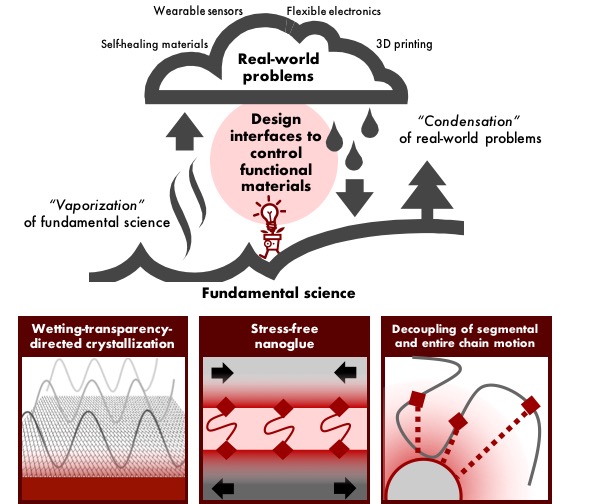
Our goal is to bridge between fundamental understanding and engineering of nanopatterned functional materials (e.g. 2D materials and novel metals) on non-ideal surfaces (e.g. flexible substrates) towards applications such as light harvesting devices and bio-sensors. To access the extreme properties of these materials, we leverage the self-assembly of polymers and functional nanomaterials by tailoring interfacial chemistry and nano-processing. Our system development begins with synthesis and carries through processing and characterization; we synthesize homo and block copolymers via radical based controlled polymerization methods and end-group functionalization, and process them to ultrathin films, nanofibers, and nanocomposites. The structure-optoelectronic property relationships of these materials are our primary interest. We characterize the micro-nano structure of the materials by X-ray scattering, electron microscopes, and atomic force microscopy, while optoelectronic properties are investigated by UV to IR absorption behavior. From a fundamental perspective, we study kinetics of structure development and polymer dynamic under nanoconfinement by fluorescent microscopy; this understanding will be translated into system design. These efforts push nanopatterning technology based on traditional silicon-based substrates to the next generation, where most electric devices will be flexible and wearable.
Keywords: Directed self-assembly, patterning on non-ideal surfaces, hierarchical metasurfaces, nanoconfinement, block copolymers, 2-D materials, fluorescent microscopy
